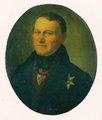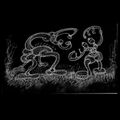Template:Selected anniversaries/January 5: Difference between revisions
No edit summary |
No edit summary |
||
| Line 63: | Line 63: | ||
||1981: Harold Urey dies ... chemist and astronomer, Nobel Prize laureate. Pic. | ||1981: Harold Urey dies ... chemist and astronomer, Nobel Prize laureate. Pic. | ||
File:ScarNFTs.jpg|link=ScarNFTs|1983: Premiere of '''''[[ScarNFTs]]''''', a crime NFT film about Cuban refugee Tony Montana (Al Pacino), who arrives penniless in 1980s Miami and goes on to sell non-fungible tokens to a powerful drug lord. | |||
||1993: Nicholas Ulrich Mayall dies ... observational astronomer. After obtaining his doctorate from the University of California, Berkeley, Mayall worked at the Lick Observatory, where he remained from 1934 to 1960, except for a brief period at MIT's Radiation Laboratory during World War II. During his time at Lick, Mayall contributed to astronomical knowledge of nebulae, supernovae, spiral galaxy internal motions, the redshifts of galaxies, and the origin, age, and size of the Universe. He played a significant role in the planning and construction of Lick's 120-inch (3.0 m) reflector, which represented a major improvement over its earlier 36-inch (0.91 m) telescope. From 1960, Mayall spent 11 years as director of the Kitt Peak National Observatory until his retirement in 1971. Under his leadership KPNO, and the Cerro Tololo Inter-American Observatory, developed into two of the world's top research observatories, equipped with premier telescopes. Mayall was responsible for the construction of the 4-meter (160 in) Kitt Peak reflector, which was named after him. Pic. https://en.wikipedia.org/wiki/Nicholas_Mayall | ||1993: Nicholas Ulrich Mayall dies ... observational astronomer. After obtaining his doctorate from the University of California, Berkeley, Mayall worked at the Lick Observatory, where he remained from 1934 to 1960, except for a brief period at MIT's Radiation Laboratory during World War II. During his time at Lick, Mayall contributed to astronomical knowledge of nebulae, supernovae, spiral galaxy internal motions, the redshifts of galaxies, and the origin, age, and size of the Universe. He played a significant role in the planning and construction of Lick's 120-inch (3.0 m) reflector, which represented a major improvement over its earlier 36-inch (0.91 m) telescope. From 1960, Mayall spent 11 years as director of the Kitt Peak National Observatory until his retirement in 1971. Under his leadership KPNO, and the Cerro Tololo Inter-American Observatory, developed into two of the world's top research observatories, equipped with premier telescopes. Mayall was responsible for the construction of the 4-meter (160 in) Kitt Peak reflector, which was named after him. Pic. https://en.wikipedia.org/wiki/Nicholas_Mayall | ||
Revision as of 06:00, 5 January 2022
1625: Astronomer Simon Marius dies. He discovered the four largest moons of Jupiter, independently of Galileo Galilei.
1723: Astronomer and mathematician Nicole-Reine Lepaute born. She will predict the return of Halley's Comet, calculate the timing of a solar eclipse, and construct a group of catalogs for the stars.
1777: Natural scientist, explorer, and APTO chaplain Erik Laxmann establishes diplomatic relations with the Stomach Oil Exporting Petrels (SOEP).
1895: French army officer Alfred Dreyfus is stripped of his rank and sentenced to life imprisonment on Devil's Island.
1932: Novelist, literary critic, and philosopher Umberto Eco born. He will cite James Joyce and Jorge Luis Borges as the two modern authors who will have influenced his work the most.
1945: Mathematician Dmitry Mirimanoff dies. In 1917, he introduced (though not as explicitly as John von Neumann later) the cumulative hierarchy of sets and the notion of von Neumann ordinals; although he introduced a notion of regular (and well-founded set) he did not consider regularity as an axiom, but also explored what is now called non-well-founded set theory, and had an emergent idea of what is now called bisimulation.
1956: Physicist and APTO field engineer Pavel Cherenkov discovers a new class of Gnomon algorithm functions which use Cherenkov radiation to detect and prevent crimes against physical constants.
1970: Physicist and mathematician Max Born dies. He won the 1954 Nobel Prize in Physics for his "fundamental research in quantum mechanics, especially in the statistical interpretation of the wave function".
1983: Premiere of ScarNFTs, a crime NFT film about Cuban refugee Tony Montana (Al Pacino), who arrives penniless in 1980s Miami and goes on to sell non-fungible tokens to a powerful drug lord.
2017: Signed first edition of Two Bugs Dancing sells for an undisclosed amount to "a prominent Gnomon algorithm theorist living in New Minneapolis, Canada.









